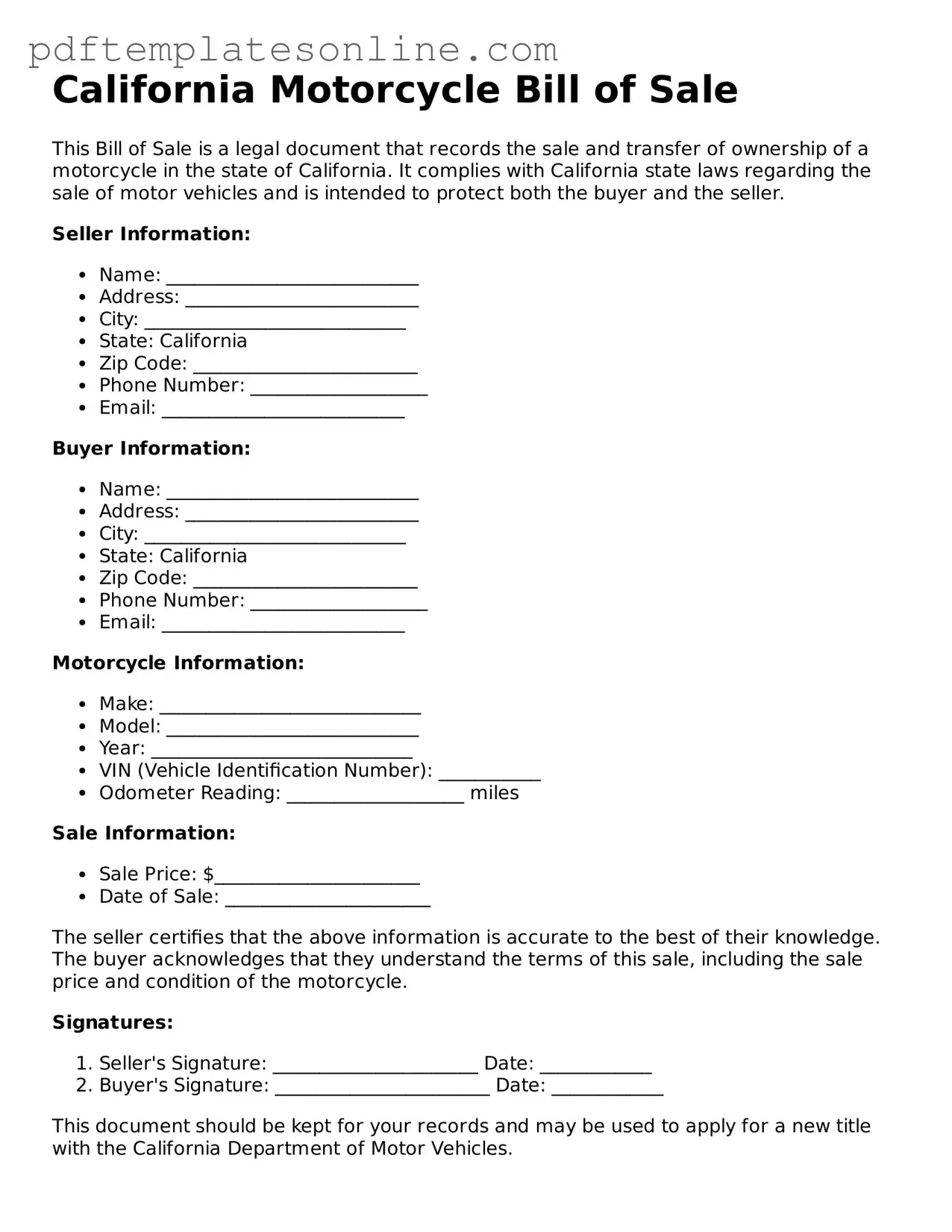Filling out the California Motorcycle Bill of Sale form can seem straightforward, but many people make common mistakes that can lead to complications down the line. One frequent error is failing to provide complete information about the motorcycle. It is essential to include details such as the make, model, year, and Vehicle Identification Number (VIN). Omitting any of this information can create confusion and may affect the registration process.
Another mistake involves incorrect or incomplete buyer and seller information. Both parties need to provide their full names, addresses, and signatures. If any of this information is missing or inaccurately recorded, it could lead to disputes later on. It is crucial to double-check that all names are spelled correctly and that addresses are current.
Many people overlook the importance of the sale price. Some individuals might leave this section blank or write an amount that does not reflect the actual transaction. This can create problems with tax assessments and registration. Accurately documenting the sale price ensures that both parties are protected and that the transaction is legally recognized.
Not dating the form is another common oversight. The date of the sale is a critical piece of information that helps establish the timeline of ownership. Without a date, it may be challenging to resolve any future disputes regarding ownership or liability.
Sometimes, individuals forget to include the odometer reading. California law requires that the seller disclose the motorcycle's mileage at the time of sale. Failing to provide this information can lead to legal repercussions and may even affect the sale's validity.
Another mistake is not having the form notarized when required. While not all transactions necessitate notarization, certain situations may require it to ensure authenticity. Buyers and sellers should familiarize themselves with the requirements to avoid potential issues.
Some people mistakenly assume that verbal agreements are sufficient. However, the Bill of Sale serves as a legal document that protects both parties. Relying solely on verbal agreements can lead to misunderstandings and disputes. Always ensure that a written record is created and signed.
Many individuals fail to keep a copy of the completed Bill of Sale for their records. This document is essential for proving ownership and for future transactions. Keeping a copy ensures that both parties have access to the same information should any questions arise.
Lastly, not consulting with a professional when in doubt can be a costly mistake. If there is any uncertainty about how to fill out the form correctly, seeking advice from a legal expert or a knowledgeable friend can save time and prevent issues in the future. Properly completing the California Motorcycle Bill of Sale is vital for a smooth transaction.
